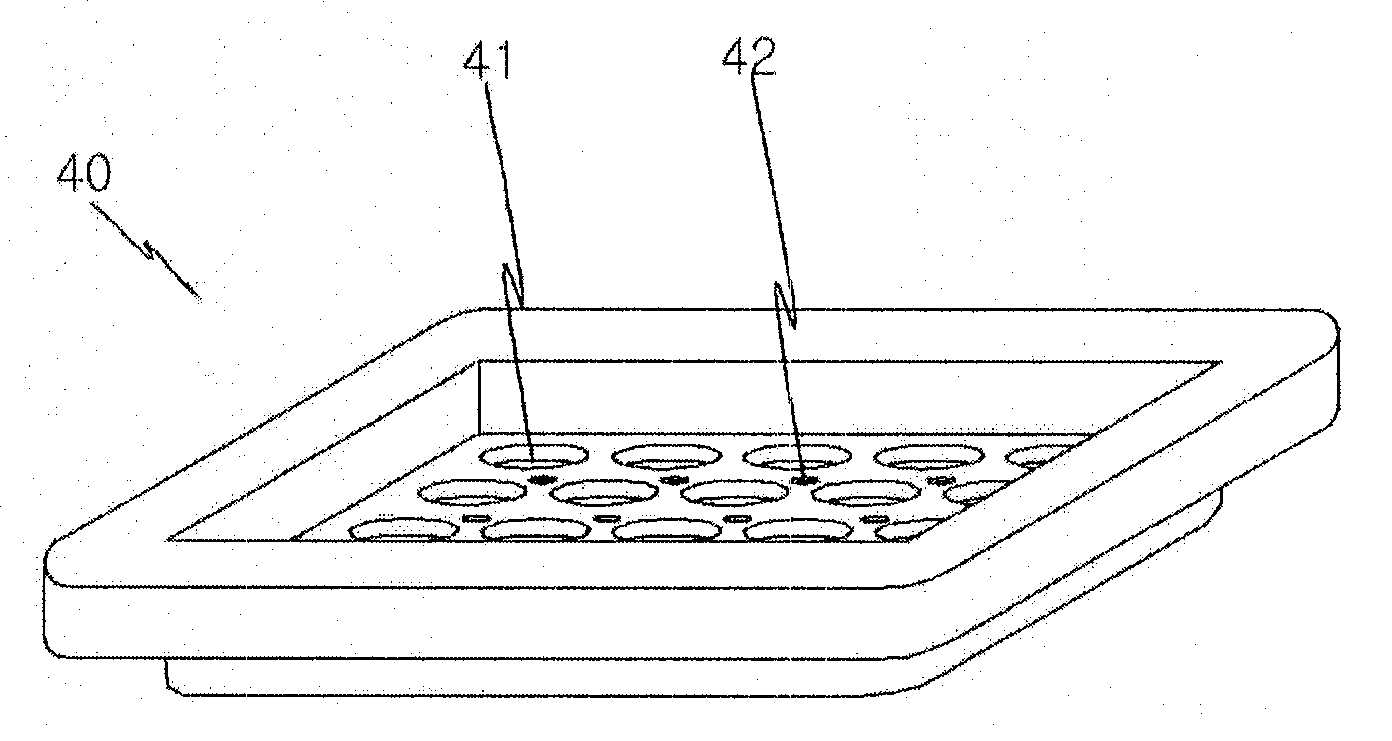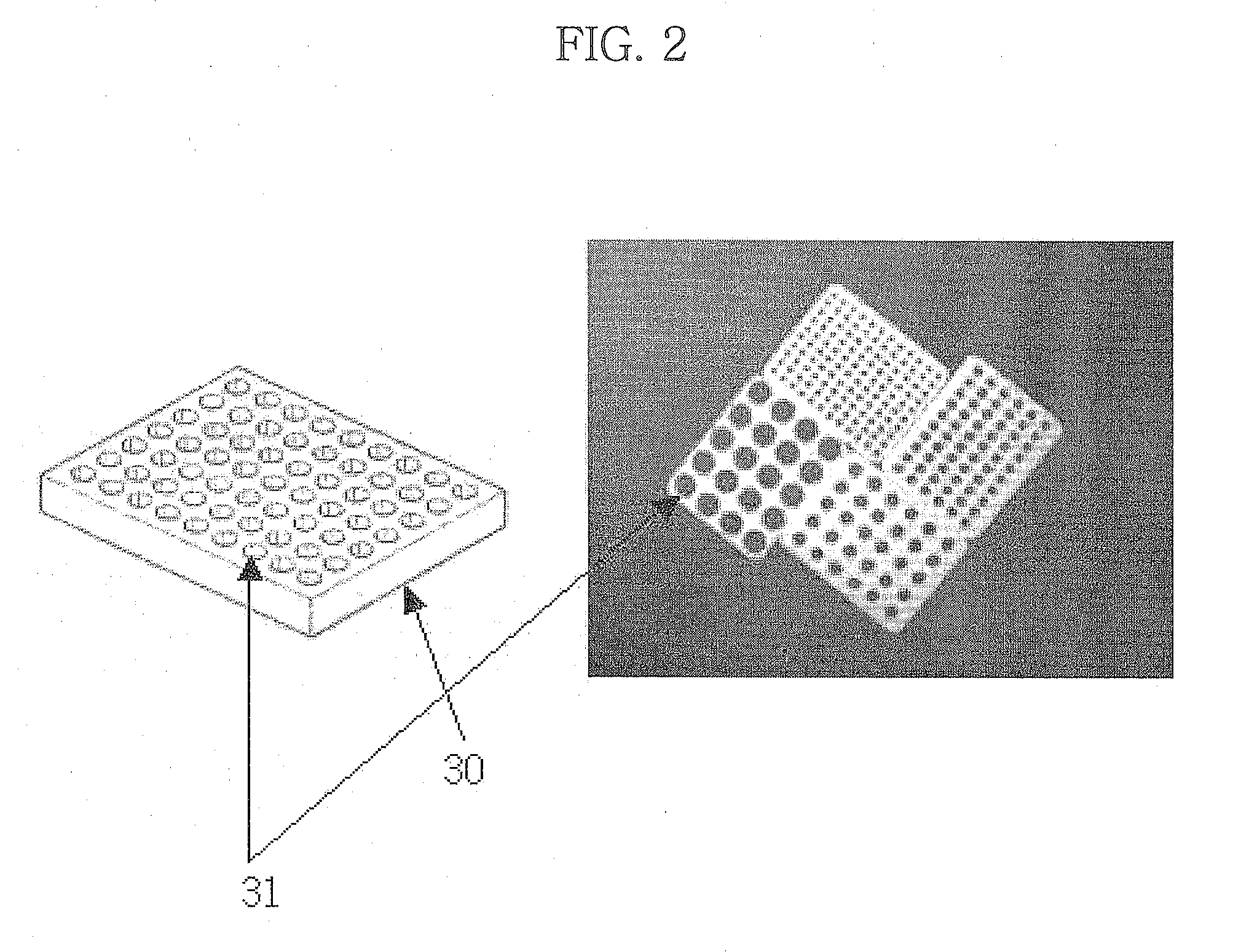Mold of recipient block and usage thereof
a technology for recipient blocks and molds, applied in the field of molds for the preparation of recipient blocks, can solve the problems of high cost analysis of tissue samples, lack of consistency and reliability, and time-consuming
- Summary
- Abstract
- Description
- Claims
- Application Information
AI Technical Summary
Benefits of technology
Problems solved by technology
Method used
Image
Examples
example
Construction of Tissue Microarray Block
[0057]As illustrated in FIG. 5a, cores separated from a donor block were arrayed in the sample-receiving holes in the mold for the preparation of recipient blocks using puncher having a punching tip the diameter of which was to be the same as the inner diameter of the sample-receiving holes.
[0058]Next, the mold for the preparation of recipient blocks in accordance with the present invention was placed in the base mold, as shown in FIG. 5b. At this time, there should be some spacing between the sample-receiving holes in the mold for the preparation of recipient blocks and the bottom of the base mold. Subsequently, the samples were pushed toward the bottom of the base mold using a stick.
[0059]Thereafter, as shown in FIG. 5c, the base mold was filled with a liquid base material for the recipient block, followed by incubating it at 60˜62° C. for 20˜30 min in a paraffin oven, as shown in FIG. 5d. Then, the liquid base material was completely solidif...
PUM
| Property | Measurement | Unit |
|---|---|---|
| size | aaaaa | aaaaa |
| inner diameter | aaaaa | aaaaa |
| inner diameter | aaaaa | aaaaa |
Abstract
Description
Claims
Application Information
 Login to View More
Login to View More - R&D
- Intellectual Property
- Life Sciences
- Materials
- Tech Scout
- Unparalleled Data Quality
- Higher Quality Content
- 60% Fewer Hallucinations
Browse by: Latest US Patents, China's latest patents, Technical Efficacy Thesaurus, Application Domain, Technology Topic, Popular Technical Reports.
© 2025 PatSnap. All rights reserved.Legal|Privacy policy|Modern Slavery Act Transparency Statement|Sitemap|About US| Contact US: help@patsnap.com



